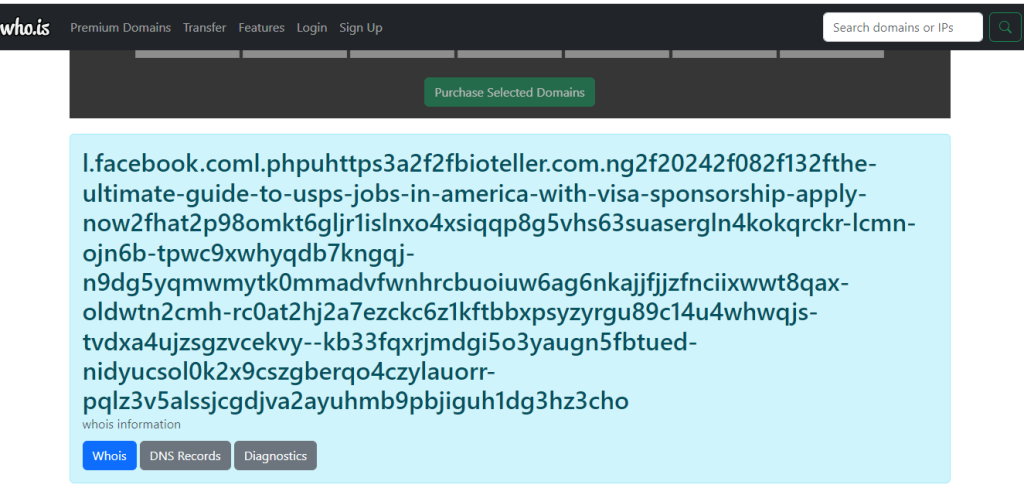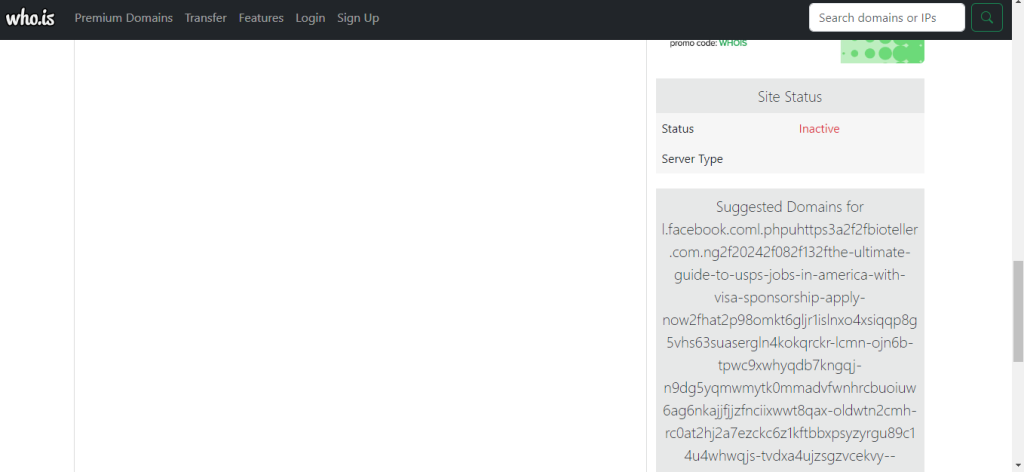October 11, 2024
By Olusola Oludiran
Factcheck: Phishing Used to Misinform Public that FG is Giving Flood Grant
Claim: Federal government is giving N250k as flood grant
Verdict: False
The use of Phishing website to proliferate false and misleading
Information has become a free flow activity on Social Media, as a Facebook page with the username Sema.com posted on their handle that the Federal Government of Nigeria is dolling out relief funds and grants to the victims of flood in the country.
According to the source of the claim, the post which has been uploaded on the social media repeatedly with a graphic photograph of President Bola Tinubu since October 1st, 2024 here till the time of writing this report here, asked Nigerians to apply for the grant of N250,000 as a respite to their losses.
The post which also has a website link that directs to the registration portal to obtain the grant is captioned “The Federal Government of Nigeria is taking action to support victims nationwide! Are you or a loved one affected by the floods? kindly Apply for the 25OK grants, it’s absolutely free”.
Flooding in Nigeria
Over the years, Nigeria has been plagued with some devastating moments, in which some parts of the country were encountered by heavy floods, making many citizens lose their homes and their properties. In 2022, the federal government of Nigeria recorded that 603 people died while 1.3 million were displaced due to flooding that occurred in the country that year. Associated Press described the 2022 flood as the worst the country has seen in a decade
Meanwhile, in 2024, there have been incidents of flooding recorded across the country. For instance, in August, over 1000 homes were reportedly destroyed in Bauchi, Sokoto, Zamfara. Also, earlier in July, Sokoto state also recorded not less than 1,000 displaced people while approximately 2,000 households homeless in the Talata Mafara local government area, affecting communities such as Ruwan Gora, Morai, Makera, and Talata Mafara town.
Worst still, in September 2024, another heavy flooding hit Borno state, with the report that water from the collapsed Alau Dam submerged many areas in Maiduguri, the state capital. It was reported that the heavy rainfall in the state exacerbated the incident, leaving thousands of the residents displaced.
Speaking after the incident, the spokesperson of the National Emergency Management Agency (NEMA), Manzo Ezekiel, said more than 23,000 households were affected by the flood as 70 percent of Maiduguri was submerged by the fast-moving waters, including the palace of the Shehu of Borno, Umar Ibn Garbai El-Kanemi; the state secretariat, post office, cemetery, and the University of Maiduguri Teaching Hospital.
Government Intervention
To sympathise with the displaced resident, many top individuals both private and in government visited the state to console the victims of the flood and the state government. Vice President, Kashim Shettima was one of the dignitaries who visited the state and promised them palliative and assured them that the administration of President Bola Tinubu will tackle the challenges of perennial flood in the country, saying that a comprehensive roadmap aimed at addressing the issue head-on has already been developed.
Following the ongoing intervention were the First Lady of the country and the son of the president, Senator Oluremi Tinubu and Seyi Tinubu, respectively who donated to the state. In the same manner, many private organisations and individuals have donated to the victim.
Subsequently, Wale Edun, the minister of finance and coordinating minister of the economy, said the Federal Executive Council (FEC) has approved the establishment of a disaster relief fund to tackle flooding and other emergencies in the country.
To crown it all, President Bola Tinubu, after his return to the country from China and London visited Borno state to commiserate with the victims expressed his commitment to supporting the rehabilitation efforts in the state, demonstrating his solidarity with the affected communities.
Meanwhile, the sensitivity of the subject matter and the national attention flooding seems like a validation for a series of information about palliatives making around. Also, since there were promises about the incident NDR decided to check the authenticity of the website linked with the claim on Facebook and check whether it is the registration portal for any grant.
Verification
To verify the website and the veracity of the claim that the federal government, NDR subjected the link to analysis, using WHOIS , a query and response protocol that is used for querying databases that store an Internet resource’s registered users, assignees, domain names, IP address blocks and autonomous systems, and the result of our findings indicated that the web link attached to the claim is inactive. Our findings further revealed that the website link does not have a recognised domain system, an indication that it is a Phishing
Website.

Phishing website is a fraudulent link that is masqueraded as a reputable entity to distribute malicious links or attachments that can extract login credentials, account numbers and other personal information from victims.
To further establish whether or not the Federal government is giving the flood grant as stated in the claim, NDR factchecker reached out to the spokesperson of the National Emergency Management Agency (NEMA), Manzo Ezekiel and he rebutted the claim.
According to Mr Ezekiel, the claim that the federal government is giving flood grants of N250,000 to the citizens is strange and untrue as it did not come from the federal government or any of the disaster management institutions.

“I must say that the federal government is giving such a grant is strange and for it to be strange, it means it is not true, at least not to my knowledge. If there is anything like that which has to do with disaster as far as NEMA is concerned, I would be aware and have ideas about it. I can not authenticate that.”
Conclusion
After examining the web link associated to the claim and determining that it is not a real website, and receiving a rebuttal from the NEMA stating that the federal government does not provide flood funds, it is concluded that the claim is false.






